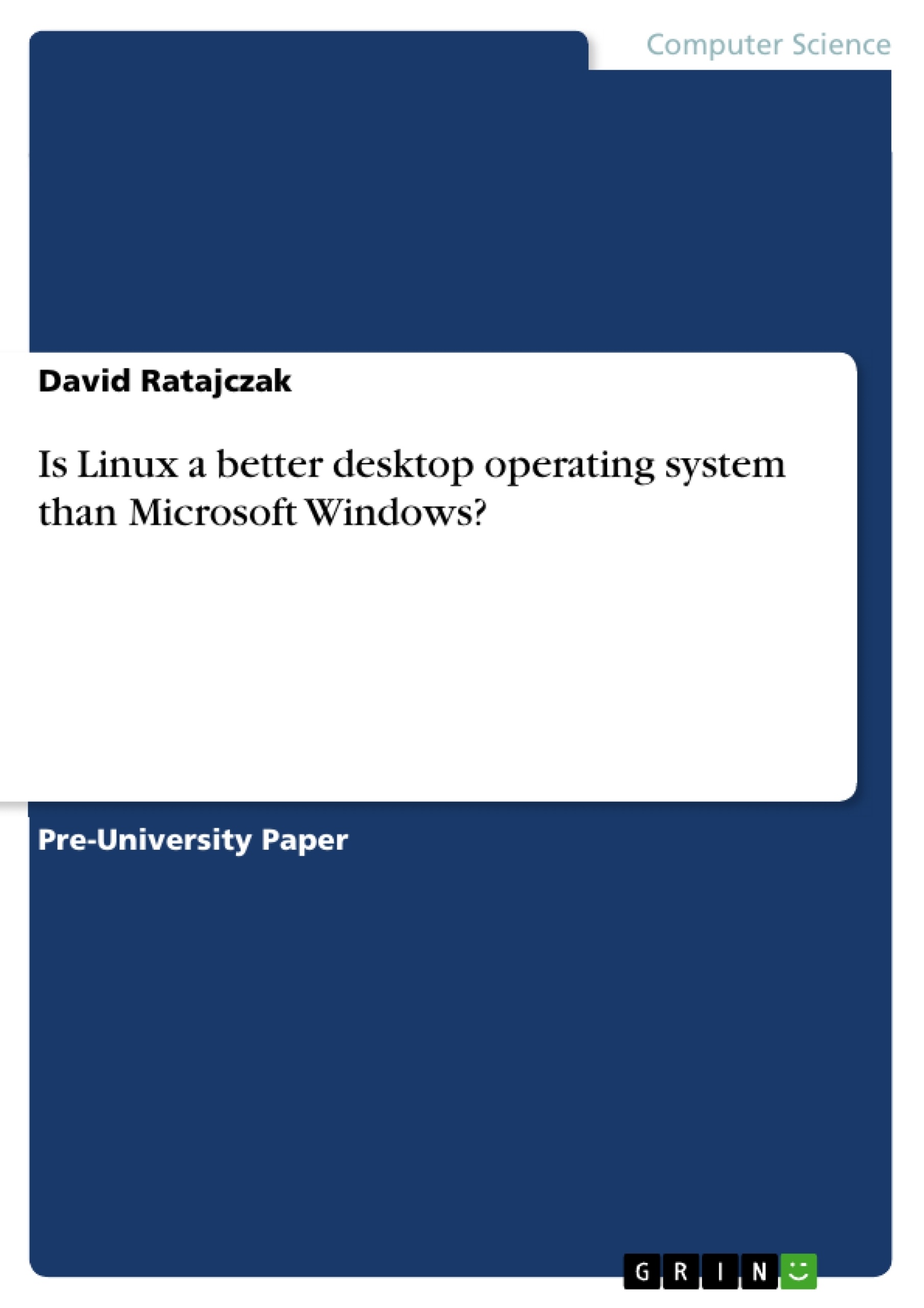When we hear the name „Linux“ we usually think about an operating system for nerds and other people with too much free time. Well, that's only partially true since Linux itself isn't an operating system. Linux is a core for operating systems which are built around it.
The history of Linux dates back to the early nineties when Linus Torvalds, a student of computer science and a member of the Swedish minority of Finland started to write his own little operating system core just for fun.
Later he mentioned this operating system core on a newsgroup and he also added the possibility of releasing it under the GPL – eventually he did so.
This paper examines and compares technical aspects as well as everyday use and of Linux and Microsoft Windows.
Inhaltsverzeichnis (Table of Contents)
- I. Introduction
- What is Linux?
- Where do we encounter it?
- What makes it special?
- And what exactly is Linux Mint?
- II. Technical Aspects
- Installing the operating system
- Hardware drivers
- Your computer's performance and resource consumption
- III. Everyday Use
- Accessing your programs and files
- Online Security
- Gaming and Multimedia
- Office Work
- Installing additional software
- Networking
- IV. Conclusion
Zielsetzung und Themenschwerpunkte (Objectives and Key Themes)
This essay explores the question of whether Linux is a better desktop operating system than Microsoft Windows. It aims to provide a comprehensive overview of Linux, focusing on its technical aspects, everyday use, and its place in the modern world. The main themes examined include:- The nature and history of Linux, including its open-source development model.
- Technical aspects of Linux, such as installation, hardware drivers, and resource consumption.
- Linux's everyday usability, covering topics like file access, security, gaming, multimedia, and office work.
- The widespread use of Linux in various applications and devices.
Zusammenfassung der Kapitel (Chapter Summaries)
I. Introduction
This chapter introduces the concept of Linux, clarifying that it is not an operating system itself, but rather a core for operating systems built around it. It highlights Linux's open-source nature and traces its history from its inception by Linus Torvalds to its widespread adoption today.II. Technical Aspects
This chapter delves into the technical aspects of Linux, covering topics such as the installation process, hardware driver compatibility, and its impact on computer performance and resource consumption.III. Everyday Use
This chapter explores the practicality of Linux for everyday use, examining its strengths and weaknesses in areas like file access, online security, gaming, multimedia, office work, and networking.
Schlüsselwörter (Keywords)
Linux, open-source, operating system, Microsoft Windows, desktop, technical aspects, everyday use, security, gaming, multimedia, office work, networking, widespread adoption.- Quote paper
- David Ratajczak (Author), 2015, Is Linux a better desktop operating system than Microsoft Windows?, Munich, GRIN Verlag, https://www.grin.com/document/292829



